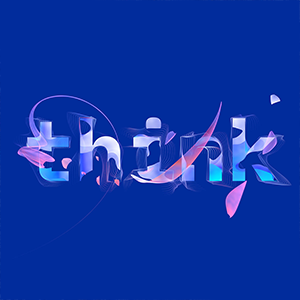IBM Think 2021 wrapped up earlier this week. While it was virtual again this year, there was certainly no shortage of valuable information and key takeaways.
One of the biggest themes was automation. IBM is looking to accelerate automation in ways that are directly visible to business users and have introduced two new products – Watson Orchestrate and new Cloud Pak for Data capabilities. Additionally, application modernization appears that it will continue to be a major story for the next decade or more as well.
Here are our big takeaways from IBM Think this year.
Automation was Everywhere at IBM Think
IBM announced Watson Orchestrate and two new capabilities for Cloud Pak for Data that will play into automation.
Watson Orchestrate
Watson Orchestrate will bring together best-in-class natural language processing with IBM’s integration and business automation platforms to enable conversational interactions for users to get their work done efficiently.
Imagine, as a sales person, talking to a chat bot and asking it to create an opportunity in your CRM for a particular client and to generate an associated quote from the standard price list. Then the chat bot automatically suggesting other products based on a propensity model. Imagine being able to build all this with low-code tools and to deploy it anywhere with the power of OpenShift.
Cloud Pak for Data – Intelligent Data Fabric and Palantir
The Cloud Pak for Data has two new capabilities, Intelligent Data Fabric and Palantir, to add automation to the tedious process of establishing data governance and lineage.
In the intelligent Data Fabric, Auto SQL enables users to write one SQL statement that can intelligently query any data source (whether it’s a Data Lake, the built-in Data Warehouse, an external Data Warehouse or some other database). It uses smart caching and AI-powered query translation to push down query execution to the remote systems and efficiently return a complete result. AutoCatalog and AutoPrivacy sit over the top and enable the platform to automatically catalog, classify and understand the data sources connected to the system and use AI to apply privacy rules to dynamically mask sensitive data.
Palantir can consume the data catalog entities as business objects, understand and represent the relationships between those objects and apply WatsonML predictive models to them. All together this accelerates the ability to build AI-powered customer 360, propensity dashboards, and other kinds of fully integrated Enterprise Knowledge applications. IBM is taking a stand against Informatica, Databricks and Snowflake with these new offerings and the ongoing work to modernize their core data platform offerings (db2 and DataStage).
Application Modernization is Still Key
Application modernization will continue to be a major story for the next decade or more. Renewed focus on full edge to core modernization using an open-core platform based around OpenShift and Edge Application Manager (Kubernetes and OpenHorizon). The combined force of these platforms is enabling IBM to modernize it’s own product offerings at a breakneck pace. They also continue to divest where the investment in modernization is not sustainable and are adopting open source replacements in places where it makes sense. IBM’s new vision of the future brings it’s best-in-class enterprise software together with open source innovation via the Cloud Pak offerings.
More Business Automation
We were fortunate enough to be invited to share our business automation and content management expertise at IBM Think this year along with our partner IBM and our customer PayPal. If you haven’t checked it out yet, catch the on-demand video session here (registration required).
The session covers how we’re helping organizations enhance their FileNet content environments with IBM Cloud Pak for Business Automation to automate the use of enterprise content with easy to use tools and intelligent services. Check it out!
Delivering top line growth: A journey to unlocking siloed data with automation
